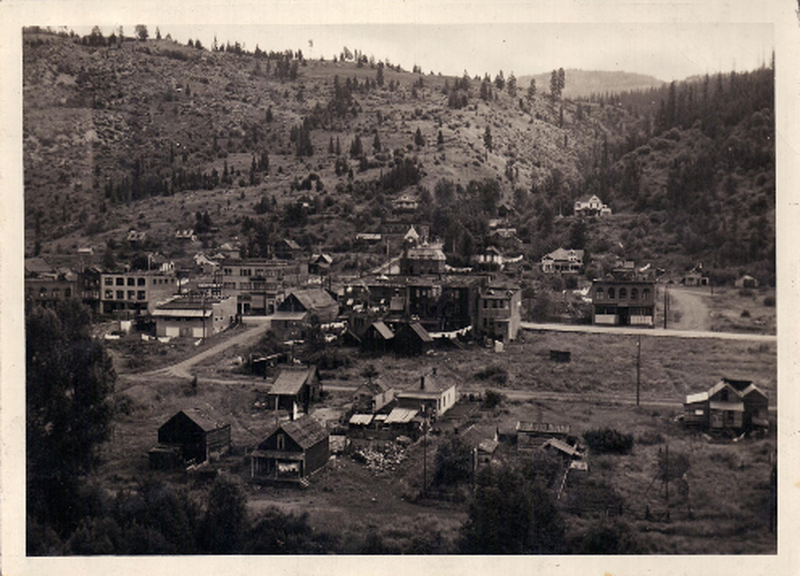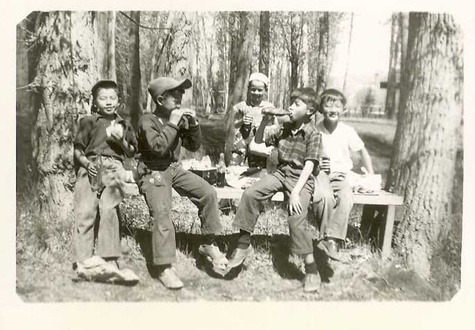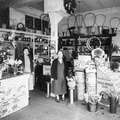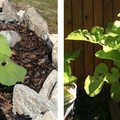SUMMER: No wonder, many of the children couldn’t wait to get out of school in June. This was the time of life for boys and girls.
As mentioned in the previous article, boys played spitball, katana kiri, bang-bang and flashlight team games. Of course, there were games where all children could play, like Kick the Can, Peggi, Jean Tori, Daily Shamble and Hide and Seek.
Summer meant building a dam at First or Second Bridge. Older kids dug up boulders from the creek and piled them high. The water level would go up to make a great swimming hole. There were no swimming lessons, so little kids began with ‘Torpedo’ and ‘Dog Paddle’. Older children learned the ‘Crawl’ or we called it ‘Overhand’. Most of the children wanted to swim underwater to find ‘treasures’. Old electrical insulators worked well, but how little we knew the danger of mercury. Mercury was rubbed on pennies and thrown into the creek. It was a challenge to pick up as many coins as possible. That was for bragging rights. We didn’t dare throw dimes and quarters since most of us didn’t have that luxury.
After a dip in the very cold creek, children ran to the sawmill burner to warm up. One boy had an idea to dig potatoes from the garden across the road, or bring potatoes from home. The mill cut thin boards to make fruit boxes to be shipped to the Okanagan. There were discarded wires all over the burner. The boys tied the wires together for length and poked it through the potatoes. Then, potatoes were thrown into the lower part of the burning sawdust pile. After ten minutes or so, baked potatoes came out! Some children left them too long and the wires melted off. What a treat to have hot baked potatoes with salt and pepper!
Others had an idea to smoke long, cigar-like wood that had rotted, but it was too hard to inhale. Someone cut off dried punk weed as it was called. One had to be careful not to inhale too quickly or else his throat could get charred. As the punk weed produced smoke, children would inhale. No, it wasn’t that kind of weed!
At First Bridge, swimmers walked to the store to buy Popsicle or Dixie Cup. Then, children would sunbathe on Trans-Canada Highway No. 3. Only the ones on the far end had to be on the look-out for cars. Whenever a car came by, a child hollered, “Car!” Most Nikkei kids got a tan so dark that friends drew artistic things on their backs like a tattoo. One yancha kid wrote something silly like ‘Aki loves Sumi’. Then, the chase began!
‘Wading’ was another fun activity. Boys hiked up to the tunnel and started fishing in the middle of the creek with just pairs of old swimming trunks and running shoes. This method was great for catching trout. By the time they reached their destination, they had bags full of fish. The drawback, of course, was that most boys’ lower legs became bright red from being in the cold stream for long hours. The yancha kids who fished behind them were frustrated they couldn’t catch any fish so they would pee in the creek so that the bubbles would come floating down to the people ahead of them.
Climbing Mt. Jubilee was another challenge. These were days when no one owned a wristwatch. The Start Line was the post office with a huge clock above. The older children ran as fast as possible to see how long it took to climb to the top of the mountain. Again, it was another form of competition and bragging rights.
One day, the religious Sacred Heart School boys carried six long 1” x 8” planks up to the peak. Here, they erected three crosses to symbolize the Crucifixion on Mt. Calvary. It was quite a spiritual sight to see. The Catholics in town all made the sign of the cross. The following day, some of the yancha kids went up there and took the middle, horizontal board off. Everyone was laughing from downtown. It spelled T I T. The culprits were never revealed.Climbing down the face of the mountain was very dangerous, and only a few dared to do that. However, the greatest danger up in the mountain was the deadly wood ticks. We were always told to wear a hat, and received the ‘monkey flea check’ when we got home.
Whenever a circus came to town, the whole community embraced this special weekend. Gamblers played the Crown and Anchor and Nickel Throws. Young children took in the rides. The highlight was the mysterious midway or the Big Tent. One can hear the Barker enticing people to see the belly dancers from Persia or promoting the Rock and Rollers from New York. Of course, the curious, little kids would find a way to go behind the tent to see these exotic dancers. One child lifted the canvas flap, and screams came from inside the tent! I guess they were dressing or undressing!
One evening, teenagers and young adults took in the Rock and Roll Show. I was only about eleven years old. The emcee introduced the stars, “Please welcome all the way from New York, the _____Brothers!” I couldn’t hear the group’s name because of all the screaming. A friend of my sisters was visiting Greenwood from Vancouver that summer. Moose hollered out, “Hey, they’re not from New York! I went to school with those guys at Britannia!” Sigh….the myth was shattered.
After the circus left town, Nikkei children would have their own circus behind # 4 building. The woodshed compartments were larger. First of all, children had to scour the countryside to look for bottle caps for currency. A team of two or three formed their own games. Cork gun shooting at targets, ball and coin throws, and more. Girls were usually the customers. I don’t believe anyone rigged their games! Children unsuspectingly were recycling, reusing and reducing.
Other activities were tying a sewing thread to bumble bees on their hind legs and making them a ‘pet’ for the day. Children caught the bees with a thin cardboard paper. If they had stings, they would be removed. Once children tired of playing with bees, they let them go. Another was tying cotton batten on a store string with a heavy weighted material like a nail or pebble on the other end. In the evening, the children perched on the fire escape stairs of the building and threw them in the air. The bats appeared out of nowhere to catch the cotton batten. The sound of ‘pachi-pachi’ batta or flying grasshoppers was so musical. Children would catch them and squeeze the back end of the body. A soy sauce-like liquid came out. Of course, the children called it shoyu. Later, they were used for fishing bait.
‘Knocky Knocky Nine Door’ was another yancha prank played by kids. Most Nikkei mothers had a broom beside the front door on the porch. Well, this one house didn’t have a porch so it was easier to play this trick. One evening, the adults were playing gaji or hanafuda late at night. One boy grabbed the broom and placed it upside down. The straw part was on top. This boy would knock and run. Across the street, the gang was waiting to see the person’s reaction. As the man opened the door, the broom would fall on his chest. Kids got a big chuckle as the head of the household swore at no one, “Ono-re kuso! Da-re-na!” The polite translation is, “Damn you, who did this!”
Children or town gang played on the main street. The hyper kids enjoyed running up and down the streets and alleys. They knew where to find empty oil cans thrown away behind the service station. When you stepped on the oil can hard, the outside part clamped to your shoes. Therefore, folks in town had to tolerate that horrendous, clanking noise when about ten boys with these contraptions on their feet went galloping on the sidewalk.
One fun trick that turned bad? Most households had sawdust bins. Some of us wanted to play a prank on an unsuspecting person. We dug a large hole so that the bucket slipped in nicely. Bucket was filled with water and sawdust sprinkled over it. I was told to tease an older boy to chase me. As I ran away and turned the corner, the boy chasing me stepped in the bucket and got his foot all wet. Boy, was he ever angry! I kept running and never returned to the scene of the crime.
In the evening, the boys and girls played ‘Wall Tag’ on Copper Street. This was Trans-Canada Highway No. 3! Mind you, cars were few and far between but still it was bit dangerous to play tag in the evening.
There was this new RCMP police who came to town and he saw the boys running around in the dark. The constable became very suspicious, so he stopped this one boy. He asked, “What’s your name?” The boy replied, “Pall.” pronounced ‘Pal’. The constable asked again, “What’s your last name?” The same boy answered, “Mall.” pronounced ‘Mal’. The policeman burst out laughing! Pall Mall was one of the cigarette brands! The brand name Phillip Morris might have been too far-fetched for a Nikkei boy.
As summer came to a close, it was a sad time for children in Greenwood, and reaching puberty was even worse. From then on, every child old enough went to pick berries all summer in places like Magna Bay, Cawston or Mt. Lehman. When they turned 16, it was fish cannery work at Goose Bay or Klemtu. Summer holidays came to an end.
© 2017 Chuck Tasaka







